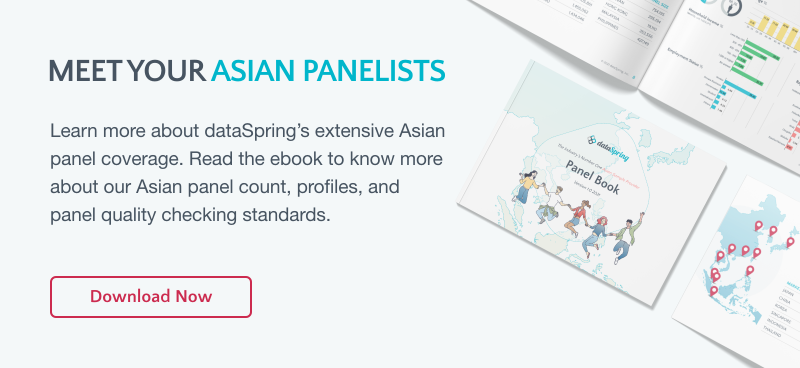
Social media has been around since the early 2000s, but in the recent decade, it evolved from a source of entertainment and communication into an essential part of daily life. It is still growing and tech companies are still developing more ways to integrate the digital domain into the physical world.
The shift towards a more digital world was accelerated as well by the COVID-19 pandemic, as the lockdown has made people rely more on the internet for news, information, entertainment, banking, and retail.
But how does social media affect consumer buying behavior? Here are some of the factors that impact customers:
1. Shortened customer journey
Before, people discover and know products from traditional ad placements on TV, newspapers, billboards, and radio, or through mom-and-pop stores. Eventually, they may have purchased the item after a few days or weeks of careful deliberation. Now, thanks to social media, finding a product can be as fast as scrolling on your phone or clicking a pop-up ad while watching a video.
Making the journey shorter and easier for customers has a huge impact on completing transactions. Known to be the social media capital of the world, the Philippines has about 76 million active social media users. A study from Visa found out that in 2015 many Filipino consumers shopped online out of convenience and items are delivered straight to their homes. Aside from that, the country is known to be a mobile-first nation, as mobile phones became more accessible and affordable.
During the pandemic, Southeast Asia saw a surge in the usage of e-commerce across the region, especially in Singapore, Malaysia, Indonesia, the Philippines, Vietnam, and Thailand. With 40 million people joining for the first time in 2020, the total number of internet users in the region rose to 400 million. When consumers were asked why they chose to use e-commerce, they shared that it was to avoid coronavirus exposure, but more importantly, they attested to its efficiency and convenience.
Annual sale dates in Asian e-commerce platforms like 11/11, which traces its roots back to Single's Day, an unofficial holiday in China, continue to rake in profits in the region, especially during the pandemic. In fact, last year’s 11/11 sale became the largest shopping event in 2020 despite the lockdowns and restrictions across the region. Shopee, the leading online marketplace in the region, reported having sold 200 million items by the end of the promotion.
Stores have also resorted to omni-channels to help increase their market share and more importantly to interact with their customers on many retail touch-points. This multi-channel environment provides a variety of seamless communication options for shoppers. Fashion e-commerce site Zalora is one of the first to adapt to this unique shopping experience. In 2016 the e-retailer launched digital interactive pop-up stores in Southeast Asia, where customers can try out apparel displayed in the store and check out the chosen product that will later be delivered to their homes.
What made e-commerce businesses successful in the Northern parts of the region are the various payment options. With a cultivated user-base of 1.1 billion people through its payment app, WeChat provided hundreds of millions of its users with digital wallets that are accessible in China, Hong Kong, Singapore, and beyond.
The customer journey has never been this convenient, providing multiple options for shoppers. With the growing internet economy sectors in Southeast Asia alone – e-commerce, transport, food delivery, financial services, and in new categories in 2020 like health and education technology – businesses continue to innovate their customer approach. The shift towards digital consumption is here to stay.
2. Product awareness
The majority of shoppers collect information before they make their final purchase and 68% of consumers go to social networking sites to read reviews. The generation that spends the most time online, Gen Z, is also likely to use digital channels to learn about a product or service.
In Southeast Asia, savvy consumers are shop-hopping across an average of 5.2 online sites before making a purchase decision. According to a report by Facebook and Bain & Company, consumers are ultimately searching for better pricing and product quality when browsing across sites. At the same time, 68% of consumers admitted to not knowing what they want to purchase before going online and 62% of them learn about new products and brands via social platforms, especially short videos
Customers are now better-informed as they have access to information about the product and company, but with so much data online it’s important to have an unbiased source and that’s where reviews come in.
Online reviews have a critical role in this stage as consumers heavily rely on product feedback for their purchasing decisions. Brands in Lazada Thailand have been doing well in terms of ratings and reviews and have helped increase their sales in three ways: getting more traffic, increasing conversion rates, and defending the brand equity from grey sellers and knock-off products.
When consumers see experienced customers share personal anecdotes to back their assumptions or ideas, it doesn’t matter anymore if these reviews are from strangers - they trust the reviews more than what the brand is saying. This is the reason why consumers are now taking the lead in shaping the perception of a brand.
3. Social proof
Social proof is a psychological phenomenon where people assume the actions of others in an attempt to reflect correct behavior for a given situation. It appears in situations where we are uncertain about what to do, and we assume that people around us and people we know would know what is going on and what should be done.
But why does social proof influence people? Studies show that people are more likely to do something if they are presented with evidence that other people have done it.
In Southeast Asia, the food sector has been on the rise and the ride-hailing giant Grab is dominating the region with its bold expansion to food delivery, GrabFood. The company was also able to capture the bubble tea craze that started from different SEA cities. According to a consulting firm in Japan, the reason for its popularity is because people get a sense of security from doing something that everyone else is doing, especially among the younger audience, as it allows them to gain confidence. Once they posted an image of themselves holding and drinking bubble tea on social media, it somehow shows that their behavior is not out of the norm.
And now with people staying at home lots of trends emerged, with one of them recently being the Dalgona coffee trend in April 2020, a coffee inspired by a South Korean candy and having a cafe-style appeal that can be achieved easily with just instant coffee. It quickly became the most searched type of coffee worldwide as people became more active online during the pandemic. It proves that by tapping the human social instinct, people will engage in action if other people are doing it.
4. Social media platforms and their users
Businesses and marketers use social media to further promote their products in the region, as these are considered the easiest and most effective platforms to engage potential Asian buyers. Let’s go through each platform to know why they are influential.
As it remains to be the biggest social media network in the world, with more than 1.7 billion users, Facebook has proven to be resilient despite all of its controversies and competition. Facebook remains to be the most popular platform, boasting 2.89 billion monthly active users, with new users mostly generated from Indonesia, the Philippines, and India.
Southeast Asian countries also use Facebook and Facebook Messenger as platforms for selling and connecting, as businesses often go where their customers are. Various social technologies and strategies were also adopted during the lockdown as businesses shifted to digital platforms. One of these tools is live selling, which is very popular among Filipino and Vietnamese consumers. Now that Facebook launched Shops in 2020, it is focusing deeper into e-commerce, creating new business opportunities for small and big businesses.
The overwhelming popularity of Facebook in the region has also led four SEA countries – Malaysia, the Philippines, Taiwan, and Hong Kong – to appear in the top ten largest advertising audiences. Contributing to this advancement is the affordability of entry-level phones, particularly in the Philippines, where a smartphone can cost USD 60 only. Mobile phones have dramatically changed the marketing landscape and social media has established itself as one of the main channels in the business sector for marketing activities.
Instagram exemplifies as the channel that influences the most shoppers, with 72% of its users making a purchase decision based on something they saw from the app. It's no surprise that more businesses advertise through Instagram influencers, where the photo-sharing platform is known for, with its ease of content creation and accessibility for everyone.
In Southeast Asia, what’s most in-demand are micro-influencers, as consumers are more drawn to content that they can relate to. Consumers in the region commonly turn to Instagram as a medium to share their purchase experiences with their networks. It is also reported that 72% of its users purchase products in the app at least once. With one billion active users, there is no limit for any business to raise their brand awareness with the right strategy and target audience reach.
As Facebook is blocked in the country, WeChat is the most popular social media platform in China, with over a billion active users monthly. It is also the most influential app in the country as it does not only offer messaging services but it also operates as:
- a social network like Instagram and Twitter where users can share content and follow celebrities.
- a service hub to pay bills digitally and transfer money, and
- a service provider for food delivery, food delivery, doctor appointments, etc.
Other platforms
Other numerous Asian social media platforms that are just as influential to select countries. Messaging apps like Line, Kakaotalk, and Viber also feature consumer services, and blogging platforms like Sina Weibo, Qzone, and Naver have forums where users can share their interests or opinions to start a conversation. As these are all intriguing apps with different functions and purposes, businesses need to think of who they are reaching when choosing what network is best to connect with their audience.
Conclusion:
The impact of social media on Asian consumer behavior is undeniably powerful as people rely now more on it for information. While the world is reeling from the pandemic, more companies are shifting to digital platforms, and tech companies are continuously developing these platforms beyond just connecting people, like retail and, online payment services, and more. Businesses now cannot afford to overlook digital platforms as they continue to grow and are expected to bring more innovative ways to integrate themselves into our daily lives. They play a vital role as they are also great opportunities to know more about the target audience, through social media analytics. If leveraged properly, businesses will be able to acquire new customers and engage with them in meaningful and profitable ways.
Check out our other Eye on Asia entries! We've got stories on the state of social media in the Philippines and the video game industry in South Korea. See you in the next one!


 Download Panel Book
Download Panel Book


